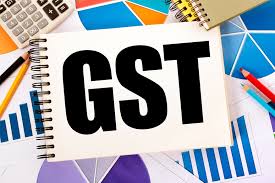PPF vs EPF: Interest rate, income tax rule, other details that you should know
EPF or Employees' Provident Fund is a government-backed retirement benefit scheme designed for salaried individuals only whereas PPF or Public Provident Fund is designed to provide old age income security to a PPF account holder. Both give income tax exemption on up to ₹1.5 lakh investment in one financial year under Section 80C of the income tax act but EPF investment is mandatory for a salaried individual while PPF is an optional investment tool available for all earning individuals. However, is it wise for an earning individual to invest in PPF account or one can have other option to get more return and save income tax as well?
Advising salaried individuals to think of Voluntary Provident Fund (VPF) instead of PPF, if the investment is for retirement fund; SEBI registered tax and investment expert Jitendra Solanki said, "If a salaried person is looking for tax saving retirement-oriented investment tool, then he has VPF, which is much better than PPF. In VPG, one will get same 8.50 per cent EPF interest rate per annum whereas PPF interest rate is 7.1 per cent only. But, PPF account has more liquidity and hence VPF can be chosen ahead of PPF only when the investment aims to create retirement fund."
Solanki went on to add that after rationalization of Provident Fund, EPF interest rate earned on investment beyond ₹2.5 lakh per annum is taxable if both employee and employer contribute in EPF account. So, one should choose VPF keeping this rationalization in mind.
PPF vs EPF vs VPF
On how to choose VPF and raise one's EPF investment; Manikaran Singhal, Founder at goodmoneying.com said, "As per the Employees' Provident Fund Organisation or EPFO rules, a salaried individual can contribute more than 12 per cent of its basic salary in its EPF account by asking the HR of its office for that. The employee can do this either at the time of joining the office or at the beginning of the new financial year." He said that an employer easily agrees for VPG as they need not to raise their monthly contribution when an employee opts for VPF. An employer need not to contribute more than 12 per cent of the basic salary of an employee even when the employee has chosen VPF.
Manikaran Singhal said that an employee has a luxury to choose either of EPF and PPF and if the employee should try invest in EPF via VPF route if he or she is looking for retirement-oriented investment tool. It helps get 1.40 per cent more return without increasing the risk factor as both PPF and EPF are 100 per cent risk-free investment options. He said that if the investment aims at saving income tax and get more return at any cost then VPF is better for a salaried individual but for those who look at liquidity during financial emergency, then PPF is better as it allows withdrawal before maturity under certain conditions, which is not as easy in the case of EPF withdrawal.
Source:https://www.livemint.com/money/personal-finance/ppf-vs-epf-interest-rate-income-tax-rule-other-details-that-you-should-know-11634371144292.html
Download our App to get knowledge updates: https://play.google.com/store/apps/details?id=com.app.gstmitra
Join Our Telegram Channel for more updates:https://t.me/praveengst




Comments
Post a Comment